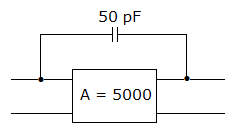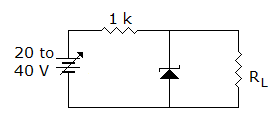Electronics and Communication Engineering - Analog Electronics
Exercise : Analog Electronics - Section 7
- Analog Electronics - Section 11
- Analog Electronics - Section 21
- Analog Electronics - Section 20
- Analog Electronics - Section 19
- Analog Electronics - Section 18
- Analog Electronics - Section 17
- Analog Electronics - Section 16
- Analog Electronics - Section 15
- Analog Electronics - Section 14
- Analog Electronics - Section 13
- Analog Electronics - Section 12
- Analog Electronics - Section 1
- Analog Electronics - Section 10
- Analog Electronics - Section 9
- Analog Electronics - Section 8
- Analog Electronics - Section 7
- Analog Electronics - Section 6
- Analog Electronics - Section 5
- Analog Electronics - Section 4
- Analog Electronics - Section 3
- Analog Electronics - Section 2
6.
A feedback network to be used with an amplifier to provide oscillation is tested and found to give an output of 0.124 V with a 0.5 V input. What percentage negative feedback should be introduced to the amplifier so that linear oscillations result?
7.
The advantage of Weinbridge oscillator over the phase shift oscillator is that oscillator the frequency may be varied over a range of
8.
In figure the input and output Miller capacitances are


9.
An inverting amplifier has R1 = 10 kΩ, and Rf = 150 kΩ then the O/P voltage, if input voltage Vi = 1 volt.
10.
Figure uses 10 V zener diode. The minimum and maximum current through series resistance are


Answer: Option
Explanation:
Minimum current =  = 10 mA.
= 10 mA.
Minimum current =  = 30 mA.
= 30 mA.
Quick links
Quantitative Aptitude
Verbal (English)
Reasoning
Programming
Interview
Placement Papers